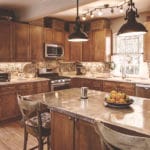The 5 Most Common Countertop Replacement Mistake
Replacing kitchen countertops represents one of the most significant home improvement investments homeowners make. Yet countless people stumble into costly mistakes that could easily be avoided with proper planning and knowledge. Whether you’re considering marble countertops for their elegant appearance or exploring other premium materials, understanding common pitfalls will save you thousands of dollars and months of frustration.
The excitement of a kitchen renovation often clouds judgment, leading to rusmakehed decisions that haunt homeowners for years. Smart planning and careful consideration of each step in the replacement process makes the difference between a successful upgrade and an expensive disaster. Too many homeowners discover their mistakes only after installation begins, when corrections become extremely costly and time-consuming.
Kitchen countertops serve as both functional work surfaces and central design elements that influence your entire space. The wrong choices can diminish property value, create daily frustrations, and require premature replacement. Understanding these common mistakes empowers you to make informed decisions that enhance your home’s beauty and functionality.
Mistake 1: Ignoring Accurate Measurements and Templates
Precise measurements form the foundation of any successful countertop installation. Many homeowners assume their existing countertops provide accurate dimensions, but this assumption proves dangerous. Old countertops often have settled, warped, or shifted over time, creating measurement discrepancies that affect new installations.
Professional fabricators create detailed templates using specialized tools and materials. These templates account for every angle, curve, and irregularity in your kitchen layout. Skipping this crucial step or attempting DIY measurements typically results in countertops that don’t fit properly, requiring expensive modifications or complete remakes.
The templating process also reveals potential issues with cabinets, plumbing, or electrical components that might interfere with installation. Discovering these problems early allows for corrections before fabrication begins, preventing costly delays and rework. Professional templating ensures seamless integration with existing kitchen elements.
Even minor measurement errors can cascade into major problems. A difference of just half an inch might prevent proper installation or create unsightly gaps. These issues often require custom fabrication solutions that add weeks to project timelines and hundreds of dollars to final costs.
Mistake 2: Choosing Materials Without Understanding Maintenance Requirements
Different countertop materials demand vastly different maintenance routines, yet many homeowners fail to research these requirements before making their selection. Natural stone surfaces require regular sealing, while engineered materials might need specific cleaning products to maintain their warranty coverage.
Some materials show scratches, stains, or etching more readily than others. Busy families might struggle with high-maintenance surfaces that require constant attention and special care. Understanding your lifestyle and cleaning habits helps determine which materials will work best in your specific situation.
The long-term costs of maintenance can significantly impact your investment. Materials that seem expensive initially might prove more economical over time if they require minimal upkeep, while seemingly affordable options might demand costly maintenance products and professional servicing.
Natural stone countertops need protective sealing every one to three years, depending on usage and stone type. This process requires professional application or careful DIY work using specialized products. Failing to maintain proper sealing leads to permanent staining and damage that cannot be reversed.
Mistake 3: Overlooking Support and Structural Requirements
Countertop materials vary dramatically in weight and structural demands. Heavy natural stones require robust cabinet support, proper bracing, and sometimes additional reinforcement to prevent sagging or cracking. Many homeowners discover too late that their existing cabinetry cannot support their chosen material.
The span between supports affects which materials work in specific layouts. Large islands or extended overhangs need special engineering considerations and support systems. Ignoring these requirements can lead to cracked countertops, damaged cabinets, or even dangerous structural failures.
Professional installers assess your cabinet condition and recommend necessary modifications before installation begins. This evaluation prevents problems and ensures your new countertops will perform properly for decades. Some cabinet upgrades might be required to handle heavier materials safely.
Inadequate support creates stress points that develop into cracks over time. These structural issues often appear months after installation, when warranty coverage might not apply. Proper planning prevents these expensive problems and protects your investment long-term.
Mistake 4: Failing to Plan for Plumbing and Electrical Integration
Modern kitchens feature complex plumbing and electrical systems that must integrate seamlessly with new countertops. Many homeowners forget to coordinate these elements, leading to complications during installation. Sink cutouts, faucet holes, and electrical outlets require precise planning and execution.
Changes in countertop thickness or material properties might affect existing plumbing connections. Some materials require different mounting techniques for sinks and fixtures. Failing to address these details during planning creates expensive delays and additional labor costs.
Electrical considerations include under-cabinet lighting, outlet placement, and appliance connections. New countertop materials might affect how these systems function or require modifications to meet current building codes. Planning these integrations prevents last-minute surprises.
Plumbing modifications often require professional assistance and local permits. These requirements add time and expense to projects when not planned properly. Coordinating with qualified professionals ensures all systems work together seamlessly.
Mistake 5: Underestimating Installation Complexity and Timeline
Professional countertop installation involves much more than simply placing slabs on cabinets. The process requires specialized tools, expertise, and coordination with other trades. Many homeowners underestimate this complexity and attempt DIY installations that result in damaged materials and unsafe conditions.
Granite countertops NC and other natural stones demand particular expertise in handling, cutting, and installation. These materials are expensive and unforgiving of mistakes. Professional installers have the experience and equipment necessary to handle these challenges safely and efficiently.
The installation timeline affects your entire kitchen renovation schedule. Delays in countertop installation can impact other contractors, extend the project duration, and increase overall costs. Understanding realistic timeframes helps coordinate all aspects of your renovation effectively.
Installation often reveals unexpected challenges that require creative solutions. Professional installers adapt to these situations using their experience and specialized tools. DIY attempts frequently result in damaged materials that require expensive replacement and professional intervention.
Understanding the Selection Process
Choosing countertop materials requires balancing aesthetics, functionality, and budget considerations. Each material offers distinct advantages and limitations that affect long-term satisfaction. Researching options thoroughly and visiting showrooms provides valuable insights into how different materials look and feel in person.
Color and pattern variations exist within each material type. Natural stones show unique characteristics that might not match samples perfectly. Understanding these variations and accepting natural differences prevents disappointment during installation.
The selection process should include consulting with design professionals who understand how materials interact with your kitchen’s lighting, cabinetry, and overall design scheme. Their expertise helps avoid costly mistakes in material selection and ensures optimal results.
Material samples provide limited representation of final appearance. Viewing full slabs helps visualize how patterns and colors will look in your specific space. This step prevents surprises and ensures your chosen material meets expectations perfectly.
Conclusion
Selecting qualified contractors makes the difference between successful countertop replacement and expensive disasters. Research potential contractors thoroughly, checking references, licenses, and insurance coverage. Quality fabricators stand behind their work with comprehensive warranties and ongoing support.
Communication with your contractor throughout the process ensures expectations align with reality. Clear contracts outlining materials, timelines, and responsibilities protect both parties and prevent misunderstandings. Regular progress updates keep projects on track and address issues promptly.
The relationship with your contractor extends beyond installation completion. Reputable companies provide ongoing support, maintenance guidance, and warranty service. Choosing a reliable granite company Durham NC ensures you have professional assistance available when needed, protecting your investment for years to come.



